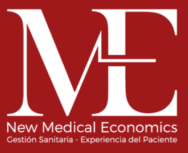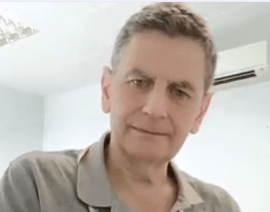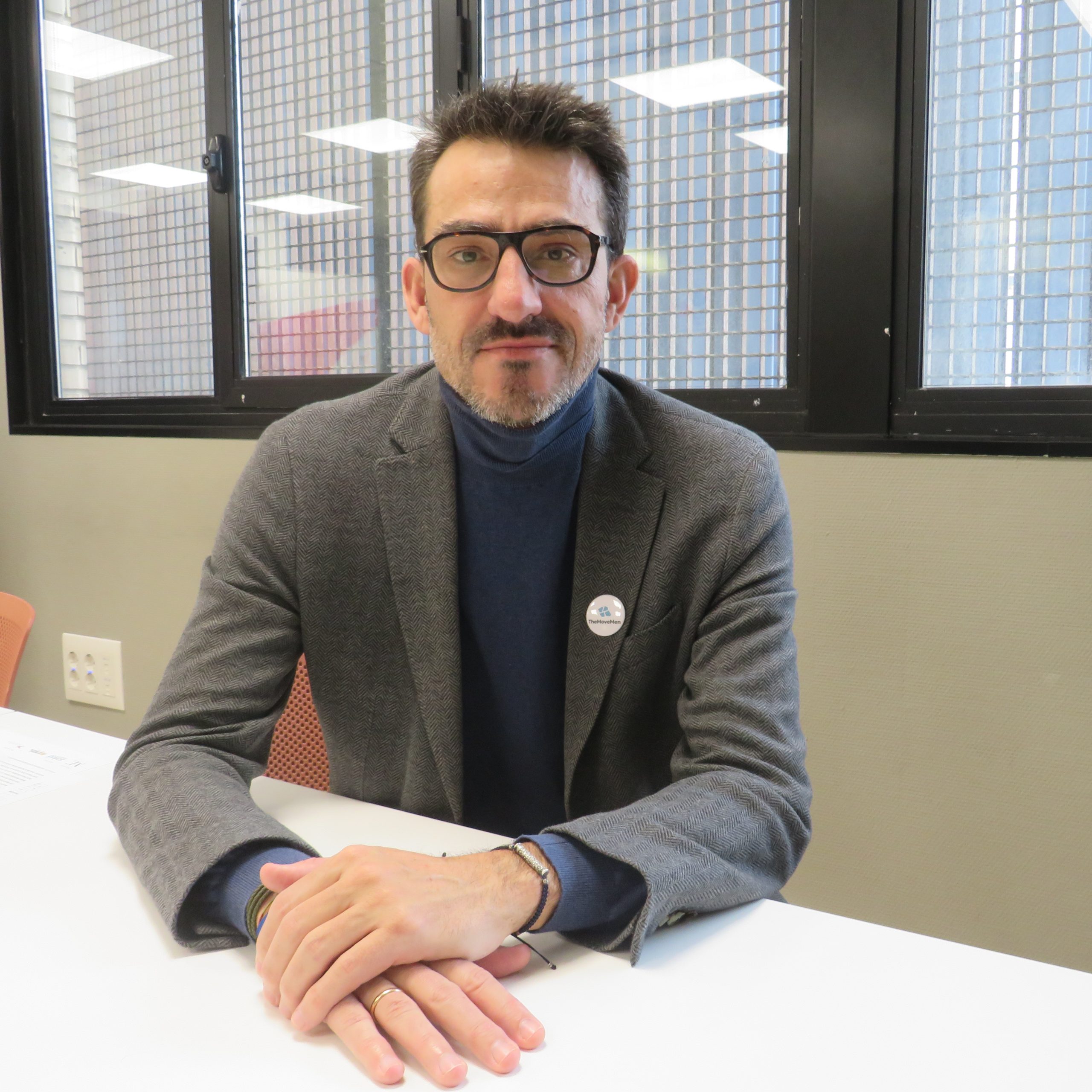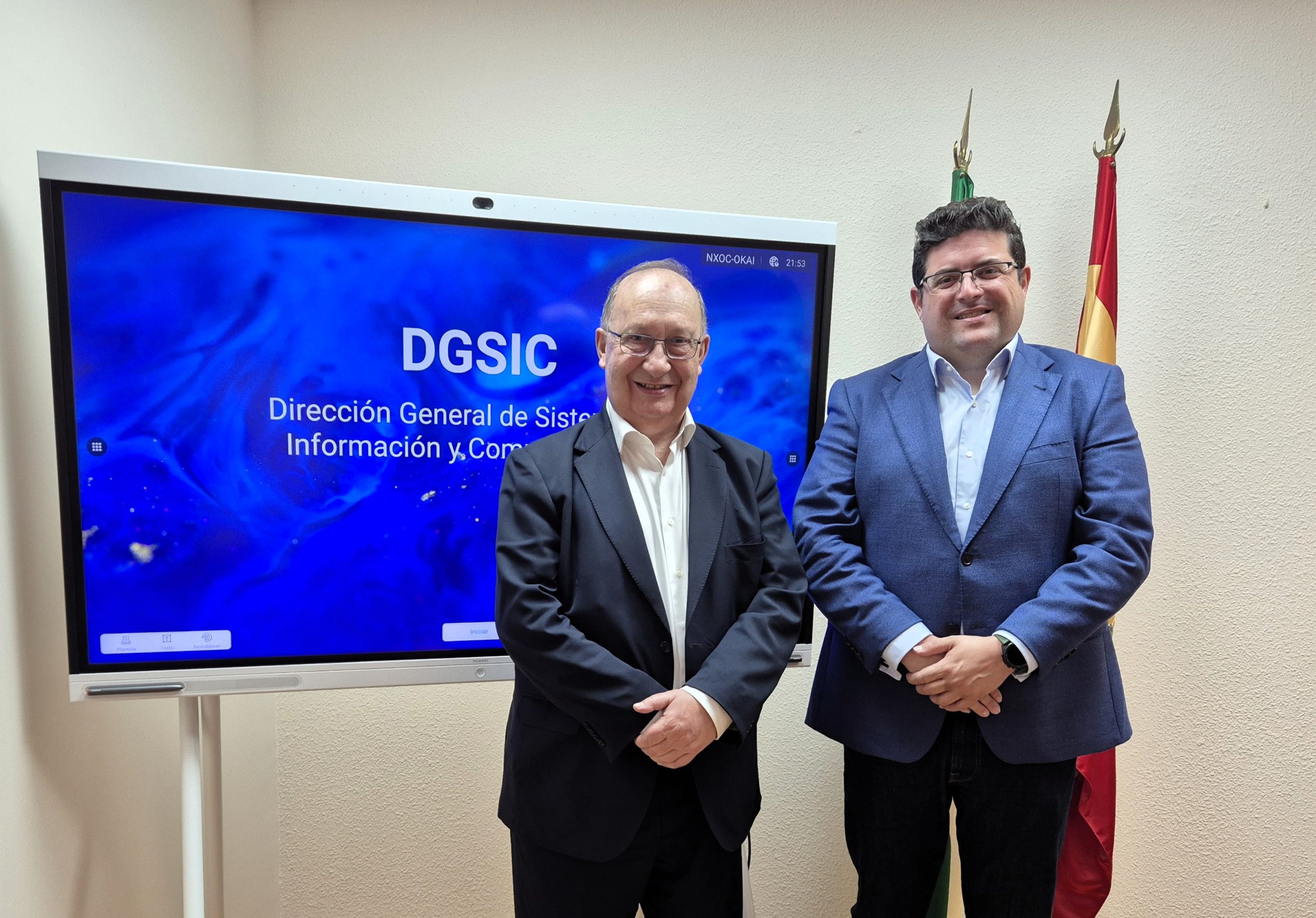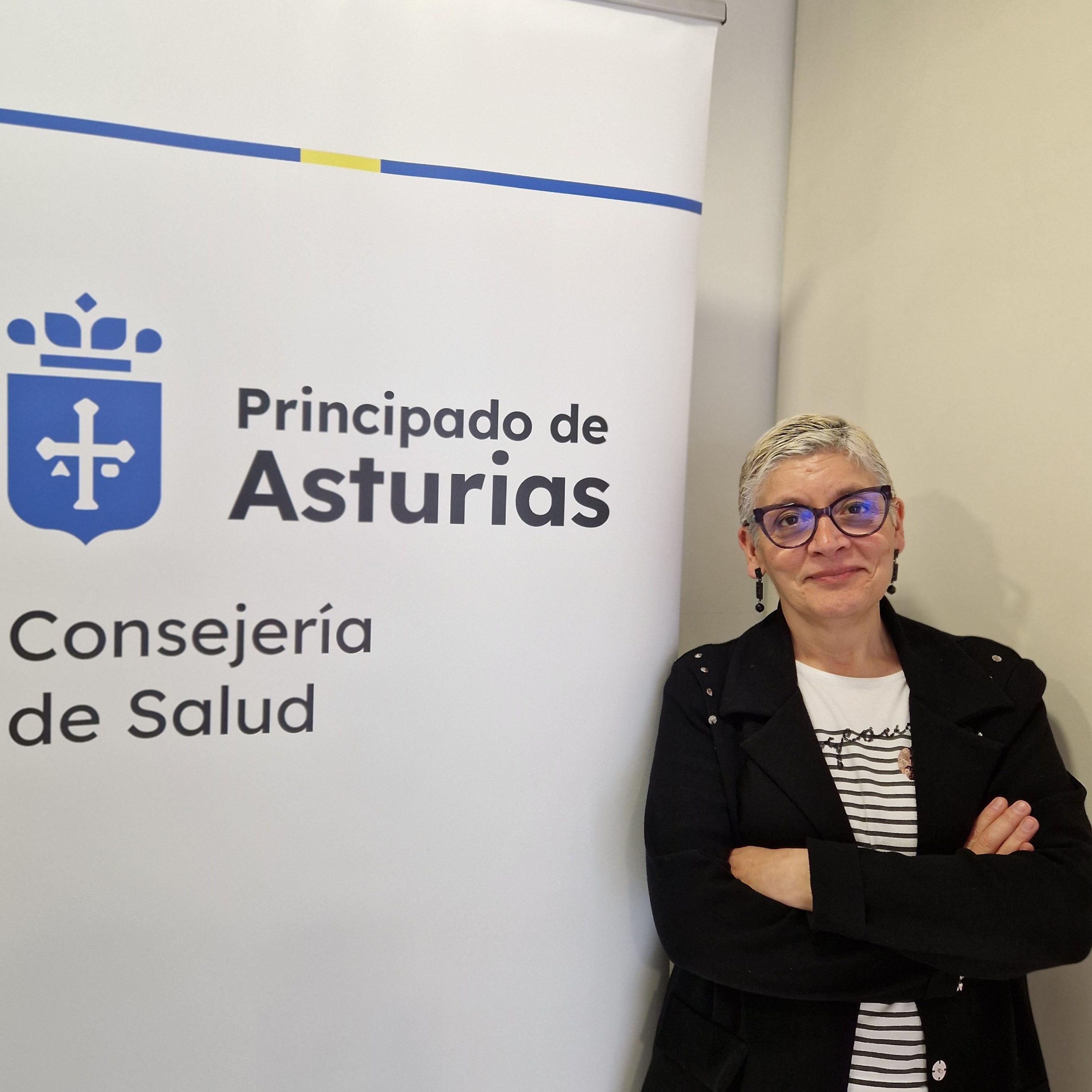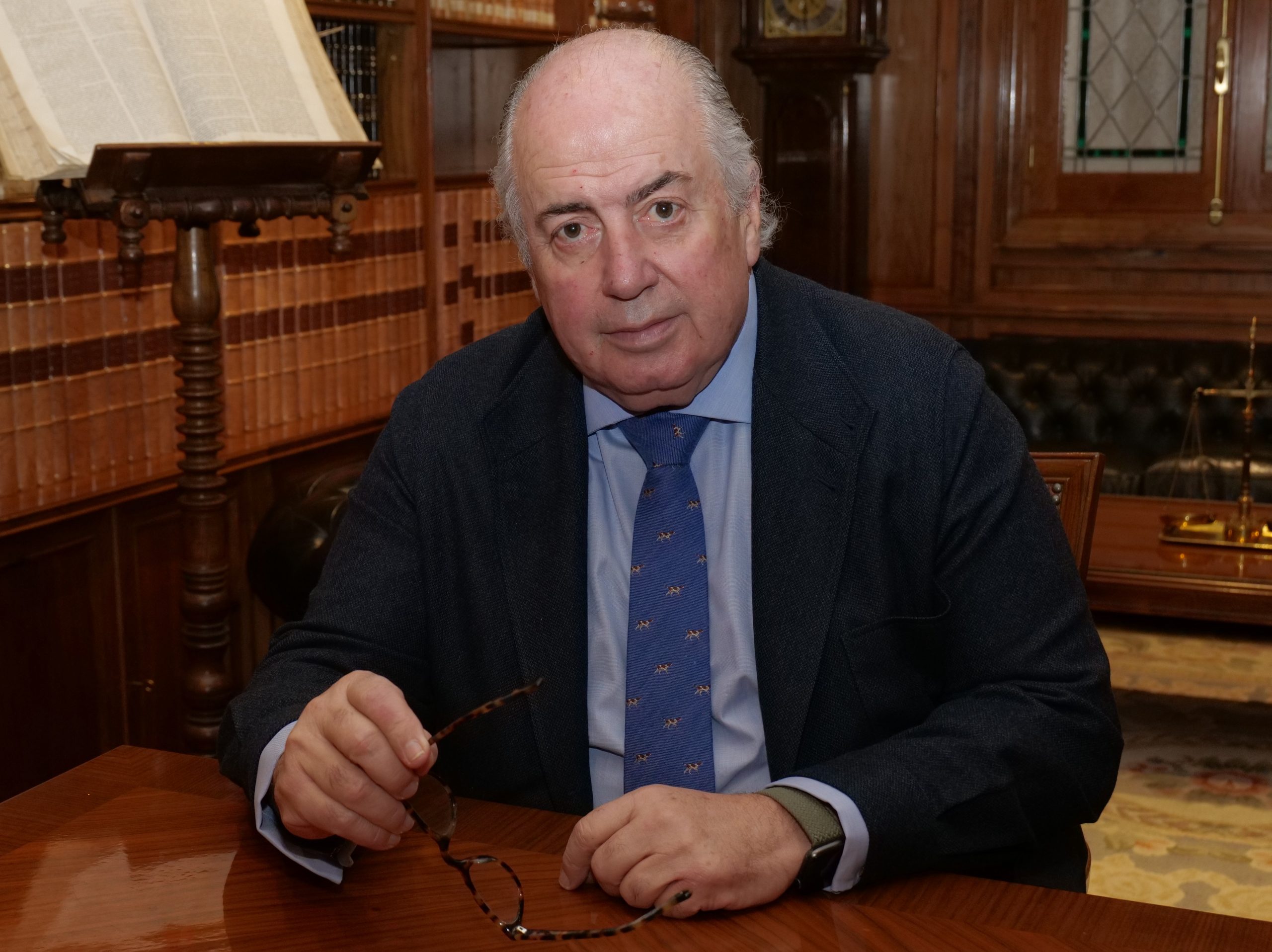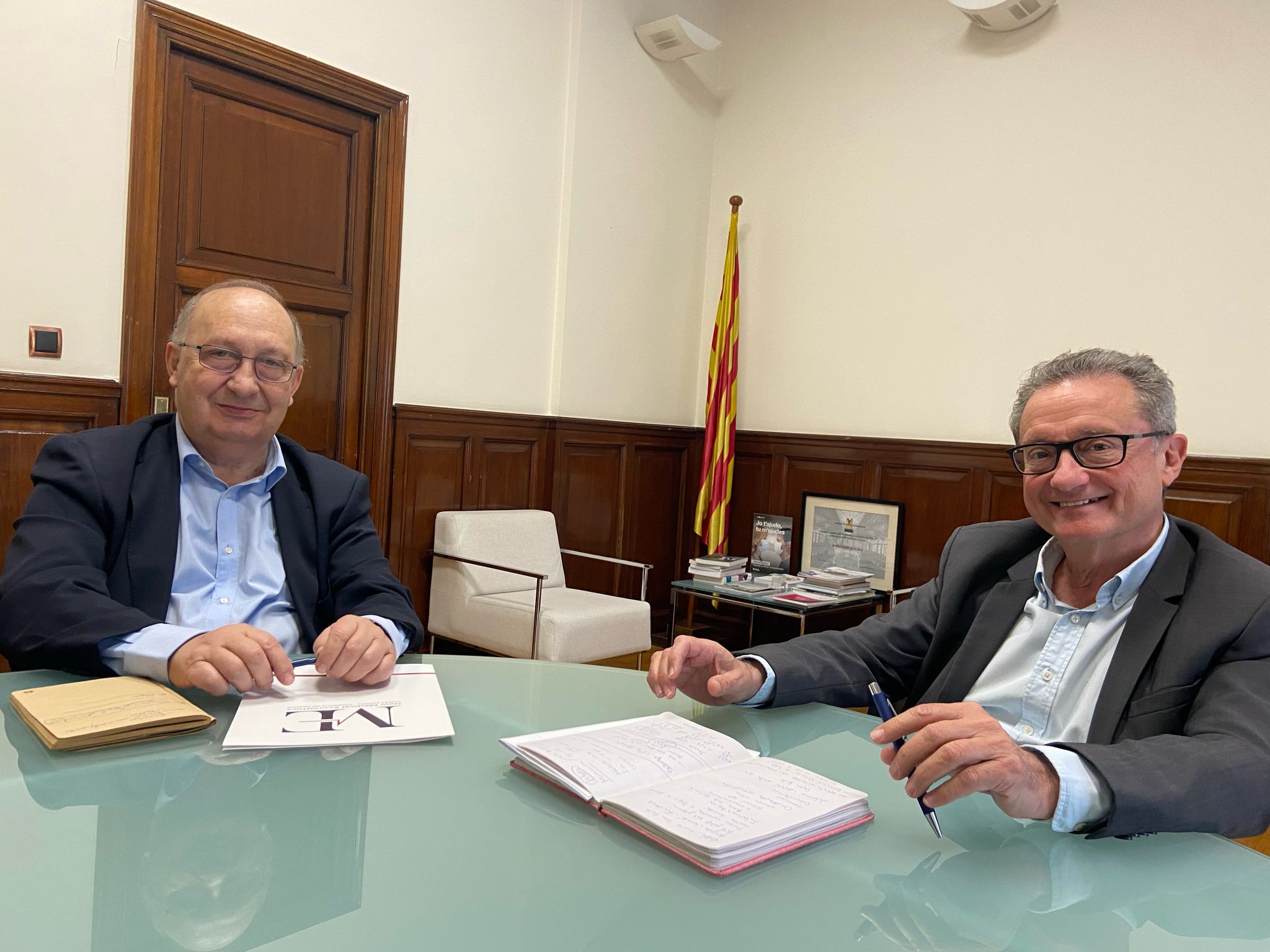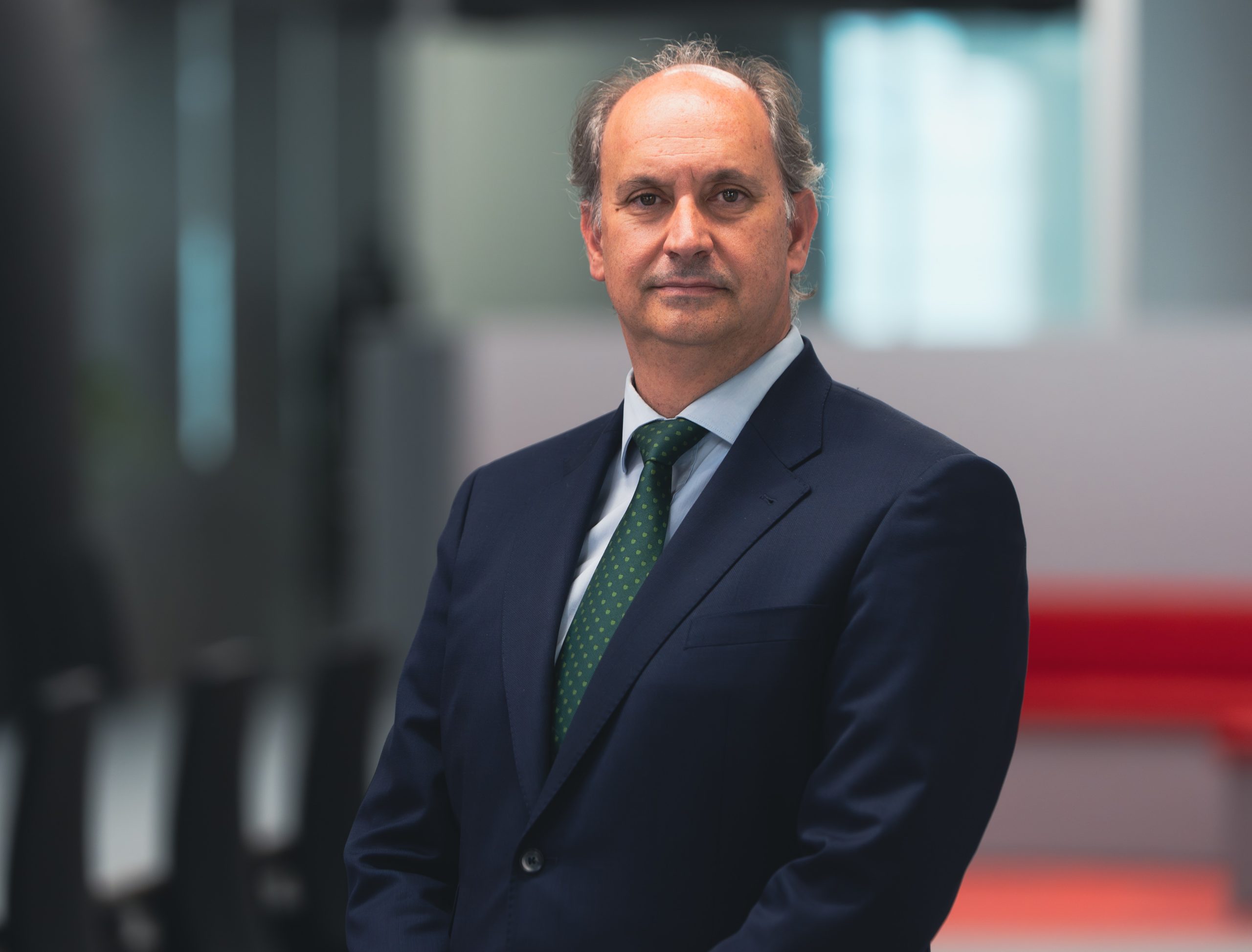‘Our goal is to launch healthcare transformation projects’
A Doctor of Medicine from the Universidad Autónoma de Barcelona, Dr Oriol Estrada Cuxart has always been interested in clinical innovation, encouraging changes that improve the healthcare system. In recent years, he has set up a technological innovation programme focused on healthcare professionals. He is the author of several publications, communications and papers, all focused on innovation, internal medicine, home hospitalisation and clinical management.
He believes that a change in the care model is necessary. When and how did he come to this conclusion?
I have worked for 25 years as a general practitioner, always intending to improve healthcare organisation beyond conventional alternatives. All the while, I have realised that the health system is adapting at a slower pace than the needs of the population, the emergence of new diseases and new technologies.
From then on, my work has focused on promoting changes to improve the health system, such as home medical care. Through the years, I have realised that you can be really useful if you encourage or promote this curiosity, for professionals to be able to work on new ways of caring for patients.
How do you understand the new paradigm in healthcare management? What initiatives is the hospital working on in line with this new approach?
At Hospital Universitario Germans Trias i Pujol in Badalona, we have a team dedicated to facilitating this transformation. Over the past 15 years, we have been constantly working on understanding medicine as something that should evolve in accordance with new healthcare challenges. We have always had that perception, especially in recent years, and that is why we created the Strategy and Innovation Directorate. We needed this Directorate to have a vision adapted to the future and carry out pilot projects that help us improve care. Success stories show which is the right path, and bring to light the areas where we can offer a better and more adapted response than the standard organisational model. We try to share the results of the success stories where we have validated the usefulness of a built-in process or a new multidisciplinary unit, so as to scale the project. We transform and innovate in mesomanagement, working as a Directorate for the staff of our centre to propose actions for change based on their experience and that of the patients. We are prone to look for teams and leaders to help us in this transformation. Sometimes, the Catalan Health Service asks us to deploy some of these actions to build a collaborative territorial care network model. In other words, we propose and implement proposals for healthcare innovation based on clinical practice. We are happy that other institutions and professionals find it useful and implement or modify our model. It is also extremely useful for us to see and learn from other centres.
For our institution, this groundbreaking concept is strategic from the perspective of the care model. It has been part of our project for years. We understand the disease as a care process, as a continuum, which allows us to improve our operations, the results, the experience of healthcare professionals and that of patients. Once you are able to assimilate processes with this philosophy and bring on board professionals from different levels and disciplines, you realise that there is much room for improvement on a daily basis. This is a wonderful opportunity to innovate in order to keep up with the times and offer a better healthcare response. Our goal is to launch healthcare transformation projects, as a starting point to look for the technology that best helps us consolidate these changes.
A key aspect in terms of innovation and healthcare technology is how little we innovate. In healthcare, there are many big buyers of technological innovation and very few technological innovators, which means that we buy technology because inertia leads us to incorporate the latest technology, but in many cases we use that the technology to do exactly the same thing; we do not change or adapt our way of doing things. It’s like buying a car and hitching a horse to pull it. Our vision sees technology as a tool. If we can implement a new way of caring for our patients, technological advances will help us overcome the limitations of technology. Technology on its own does not usually deliver a value that justifies its incorporation.
We are currently deploying the SESHAT project, aimed at transforming healthcare from a reactive to a predictive model through ongoing and reliable real-time technologies. The SESHAT project was born from an experience shared with other healthcare professionals during my years in home hospital care. We realised that we had limited information about our patients. Home hospital care is an alternative to conventional hospitalisation. Patients are treated with the same intensity and care as in a hospital, but at home, that is, we move the hospital to the patient’s home. This type of care frees up hospital resources and has multi-purpose mobile teams that care for patients in a much more personalised way and are able to adapt to changes in terms of organisation in a more flexible and agile way than the teams of conventional hospital wards. Moreover, patients find that this experience is more satisfying. The name SESHAT is allegorical. It comes from the Egyptian goddess of knowledge, writing and wisdom.
Furthermore, we need to deal with the question of efficiency. When a home hospital care programme is carried out properly, it results in a return in cost savings compared to conventional hospital care ranging from 30% to 60%. Working in home care and seeing the limitations of remote patients, we realised that a continuous telemedicine system would allow us to have data on these patients and information on their clinical evolution, thus helping us work with this data to have more information. Over the last few years, we have collaborated with various teams and technology startups to develop this concept.
As a result of our experience during COVID, we proposed CatSalut to test the new model, which involved a paradigm shift in the care model: moving from reactivity to proactivity. We have designed several care models keeping this in mind in recent years: for infectious diseases, chronicity, emergencies, endocrinology and home care, where we can apply this new technology. With SESHAT we have noticed that, by introducing the continuous collection of physiological parameters, we can monitor patients almost in real time. Not all the population benefits equally from this resource. We were looking for a segment of population with complex, acute or chronic care needs; we had to select technology that would not hinder the patient’s normal life, such as the wireless monitor or the Masimo W1 wearable wristband, with which we intend to collect information to use it for continuous monitoring and care for the patients that need so. Once we deploy the model and it turns out to be effective, the last step consists in incorporating a Command Centre where monitoring is carried out continuously and in real time. The notifications generated will be prioritised by the Command Centre and will activate the appropriate healthcare response. These alerts allow care teams to perform their clinical activity on a continuous basis without the need to monitor patients uninterruptedly for themselves. As a result, patients can stay at home with peace of mind as they know that, unless they are unwell, if we are not alerting them and the wearable is working, everything is fine. This new mindset is a significant change. Additionally, if we are able to work with the variables gathered together with the huge amount of data available in the patients’ medical records, we can work with clustering models and detect risk patterns of unfavourable clinical evolution, of complications, and even of response and therapeutic adherence to the prescribed drugs.
In short, the SESHAT project: supplements this new care model; facilitating the remote monitoring of patients, either on a hospital ward, in outpatient clinics, in outpatient care or at home; generating predictive indicators that allow us anticipate the risks of complication or a poor response, or even to achieve a better pattern to a specific treatment.
What do you seek to prove at the hospital with this groundbreaking approach? What are your ultimate aims?
In principle, this project covers all scenarios. Hence, our intention is that the various pilots deployed cover the entire target population, that is, acute and chronic patients; patients admitted at the ward or at home and finally patients treated by primary care at home institutionalised in social-healthcare centres.
The ultimate goal of SESHAT is to improve the quality of life of patients, reduce complications, mortality, hospital stays and episodes, therapeutic errors, therapeutic adherence and health outcomes. Likewise, healthcare professionals will be able to work in a high quality environment, where they will be able to anticipate complications, with more favourable clinical conditions for the patient. We understand that the improvement of the response leads to more satisfactory working conditions.
What is your timeline for implementing and consolidating the change?
The project started rolling out in the fourth quarter of 2023 and we expect to carry it out for at least three years. It should be completed by the end of 2025 or mid-2026; there is one and a half to two years of project funding left. During this time we intend to study a representative sample of the population that we believe can benefit most from this technology. The idea is to have a sufficiently representative volume of patients in follow-up for each of the cases presented. To date, approximately 200 patients have already agreed to participate. We have a sufficient stock of monitors to meet our objectives. We have purchased 150 operational wireless monitoring units, approximately, predominantly for hospital in-patients, and we plan to use up to 1000 wristband wearables for out-patient and home-patient cases. We aim to collect enough cases, monitoring both acute and chronic patients. As we validate the effectiveness of all targets in each sub-population, it will be a matter of scaling it up, expanding the population covered or protected and also accepting new cases.
Would it have been possible to implement this project ten years ago?
We presented this project in 2005 for special grants from the Ministry of Science and Technology, but at that time there was no need to develop this type of mode. It was technologically possible and viable, but not socially or economically feasible. Indeed, we received funds for a testbed to test the technology, but paradoxically they considered that funding the proof of concept in a healthcare environment was not interesting. The pandemic was a turning point in this project. COVID made us realise that we need a much more flexible and adaptable massive response capacity that also allows us to have a more satisfactory and sustainable health system. Obviously, remote care models go hand in hand with artificial intelligence, wearables and IoT.
Could you comment on the details of the implementation of the watch and wearables?
Once we obtained the funding, we started working to explore all the technology available on the market that could be potentially useful to supplement the proposed care model. With the information we gathered, we put out a call for tenders, and finally we put out a tender that was awarded to the proposal presented by Masimo. We believe that this is the technology that is best suited to the project at this time, as evidenced by the evaluation of the different aspects of the tender. A key element that we sought from the outset was that the winning company should be willing to evolve the technology towards a model that was adaptable to achieve the targets of the SESHAT model, and this is one of the added values of our partnership with Masimo. It does not only consist in using a product that may be more or less reliable, but also moving together towards the development of a product that is in line with what we are aiming for and that allows us to deliver even better results in the future.
In each SESHAT use case, the analysis of the care process in each of the situations selected is discussed with the clinical team. The process is designed and the points at which the introduction of these wearables can be of value are identified, both in conventional hospital admission, in care at home and at outpatient level. Once the action plan and the care circuit have been defined, the wearable is introduced with an agreed action protocol, requesting the participation of patients once we explain them what this remote monitoring model consists of. Change management for professional teams and patients is essential to the success of this type of project. In this deployment stage, processes are aimed at checking the effectiveness of the wearable in identifying and recording the desired constants and the patient’s tolerability to the wristband. We previously explain doctors, nurses and their care teams how the wearable works and the proposed circuits. We work with the support of technicians and consultants to train professionals, and we also explain everything to our patients and ask them if they are willing to collaborate and wear this type of device. It does not imply anything for them, as it simply gathers their data, for us to now enter a stage of checking that the technology adapts to the needs or requirements that we have defined, how we can collect a large dataset in real clinical conditions in order to begin to develop the identification and validation of predictive indicators based on artificial intelligence. The analysis of the developments made is also useful to analyse and deliver solutions based on how we work that process with the help of technology. Every month, we hold one-on-one evaluation meetings with the different groups and we work together based on project management methodology.
This teamwork on a new development involves a major effort to detect errors or points for improvement and integrate them into a new test cycle. In other words, we are learning to take the path to build this model, which in some ways had not been considered to date in such an ambitious way. Our challenge is to build a proposal and validate it, and we are working on it. We propose patients to wear the device and in case they accept, we monitor them throughout the episode according to what is proposed in each case. We carry out satisfaction studies, and in those cases where support is required or doubts arise about the project, members of the SESHAT team are available to accompany the patient throughout the process.
As for our planned schedule, we are now gathering data and seeing how the circuit is being deployed in order to improve the whole process. Our idea is to be able to work with these predictive indicators from the middle of next year, focusing on validating the usefulness or effectiveness of the whole system during the last year, once it is fully deployed.
Have you come across any difficulties in implementing this technology? How are you overcoming them?
The first challenge is change management with healthcare professionals, making them realise how useful it will be for them to work with the support of this type of technology.
The second is to convince patients that they can really benefit from this in terms of health outcomes. In this regard, we are faced with the existing digital divide. It is surprising to see how a proportion of patients, up to 40% of older patients, not only do not know how to use digital devices, but do not have any of them in their usual environment, not even a smartphone. We also find considerable logistical challenges, such as handling a large volume of wearables, the necessary accessories and spare parts, and a traceability circuit for all these devices.
Once introduced into the routine of professionals and patients, the next step is to wait for definitive conclusions about the final model, so as to generate those indicators and validate the system. This approach involves establishing something different, with a lot of work, in an environment of great uncertainty, which implies leaving the comfort zone for hundreds of professionals and patients. It is a huge challenge, but so far the response from patients and professionals is exemplary. In general, people are very enthusiastic about the project. The next thing we hope is that, if the results are positive, the remote monitoring model will really be scalable to the whole system.
What is the most important thing we can expect from a technology partner?
In healthcare and in terms of new technologies or complex technology, what we should expect strategically from a technology partner is that they are able to understand and adapt to the needs of care models. This desirable characteristic is not usually found in large or multinational companies. In general, as companies grow in size, their sensitivity to adapt to these particular needs in each case decreases. For now, fortunately, we have not experienced this feeling with Masimo, as their commitment to the SESHAT project is strategic and they are focused on perfecting the technology to make this proactive model of care feasible.
Finally, it is desirable that these technological partners see us, healthcare organisations, as a necessary partner to find the opportunity to carry out the validation of new technologies. Often the device offered is not sufficiently adapted to the real needs of professionals and patients, so it is crucial to establish a fluid and permanent dialogue of continuous improvement of the device and co-creation of new solutions together with healthcare professionals. This virtuous circle is very difficult to achieve, but it holds the key to the success of generating new technology and implementing it intelligently to improve the care we provide to the population. This plus of shared technological innovation is something we have always insisted on, and which we have always valued, especially when looking for a technological partner for the SESHAT remote monitoring project when choosing Masimo.

